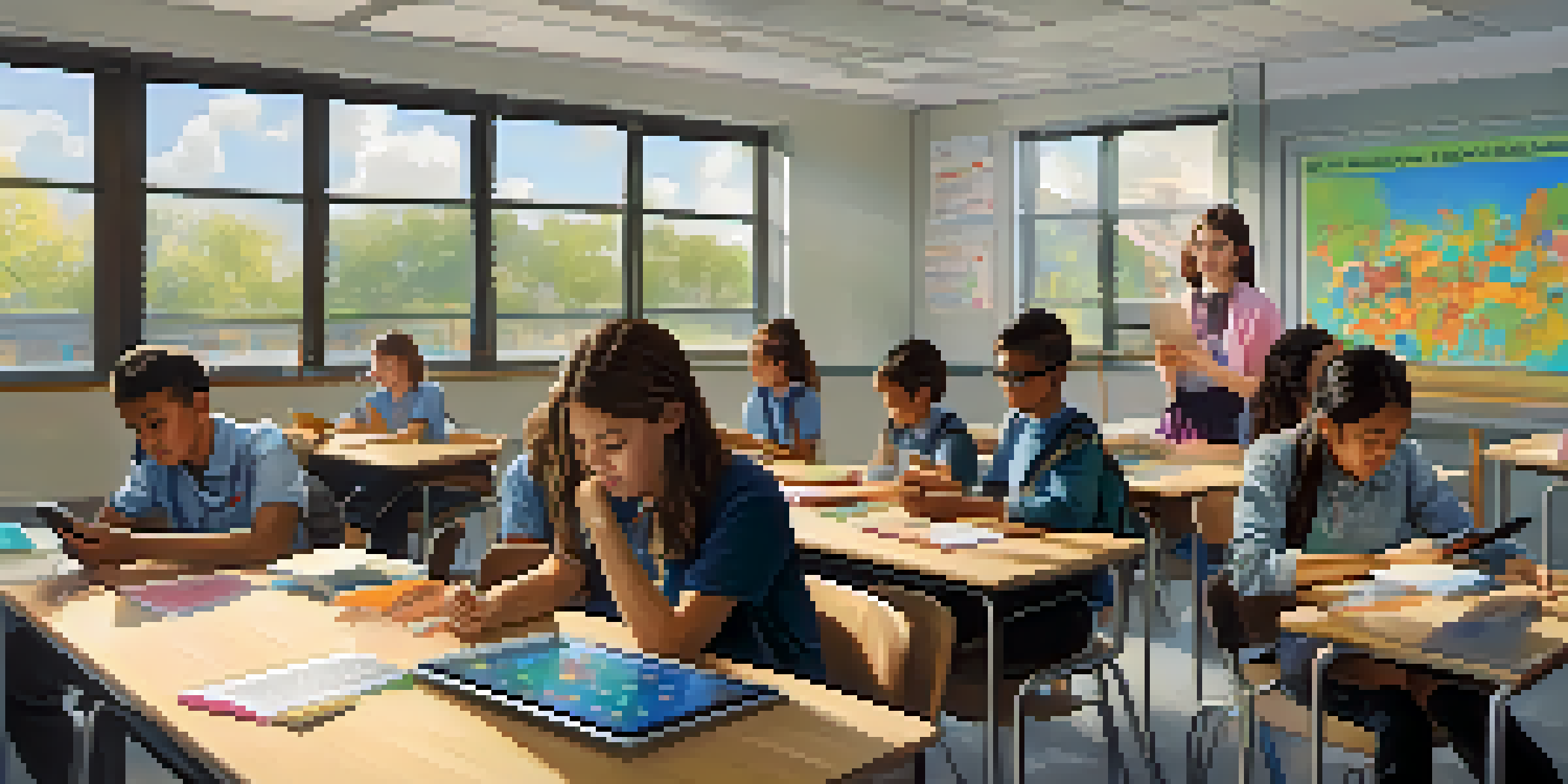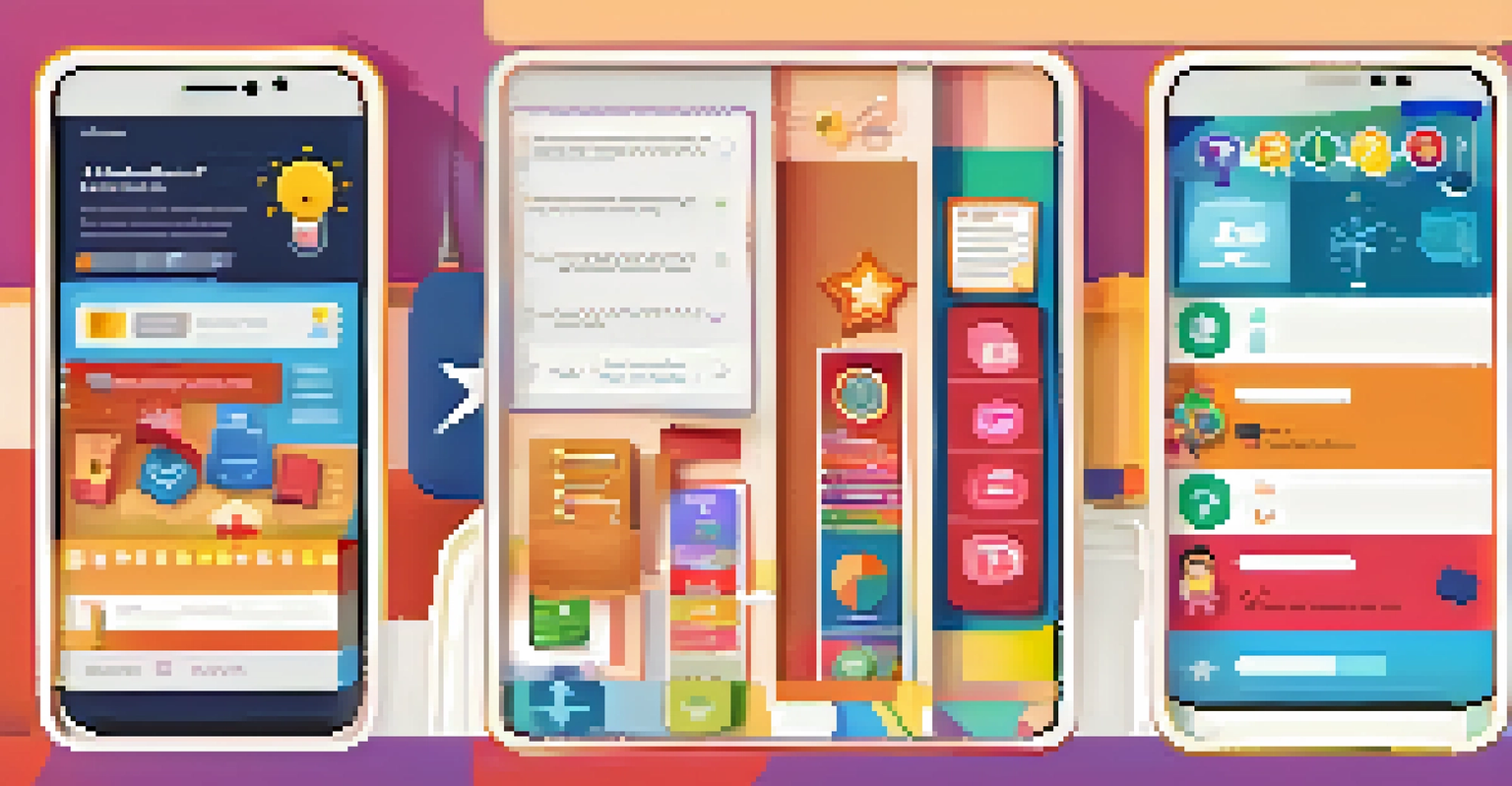The Benefits of Mobile Technology for Student Feedback

Immediate Feedback Opportunities for Students
Mobile technology allows students to provide feedback in real-time, making it easier to share their thoughts on lessons and assignments as they occur. For instance, using apps or surveys during a class lets them express their understanding or confusion instantly. This immediacy can lead to more accurate insights for educators, helping them to adjust their teaching on the fly.
Feedback is the breakfast of champions.
Imagine a scenario where a teacher asks a question and students can respond through their phones or tablets. This not only engages them but also provides quick data on their comprehension levels. It transforms the traditional feedback loop into a dynamic conversation, fostering a more responsive learning environment.
Furthermore, this immediacy helps in building a culture of open communication between students and teachers. When students see that their input is valued and utilized, they feel more invested in their learning journey, ultimately leading to better educational outcomes.
Enhanced Engagement and Participation Rates
With mobile technology, feedback mechanisms become more engaging for students, who often prefer using their devices over traditional methods. Interactive platforms that incorporate gamification elements can motivate students to participate actively in giving feedback. This increased engagement can lead to richer, more diverse responses.

For example, apps that allow students to earn rewards for completing surveys or quizzes can turn feedback into a fun activity rather than a chore. When learning feels like a game, students are more likely to contribute their insights and suggestions, creating a more vibrant educational experience.
Real-Time Feedback Boosts Learning
Mobile technology enables immediate student feedback, allowing educators to adjust their teaching methods on the spot for enhanced comprehension.
Additionally, mobile platforms can reach students who might be reluctant to speak up in a classroom setting. By providing a safe, anonymous space for feedback, more voices can be heard, resulting in a fuller picture of student experiences and needs.
Accessibility for All Students
Mobile technology breaks down barriers, allowing all students to provide feedback regardless of their circumstances. Whether they are in the classroom, studying at home, or on the go, students can easily access feedback tools through their smartphones or tablets. This flexibility is crucial in today's fast-paced world.
What is the shortest word in the English language that contains the letters: abcdef? Answer: feedback. That’s the breakfast of champions.
Consider a busy student who might not have time to fill out a feedback form during class hours. With mobile technology, they can take a few moments to share their thoughts whenever it suits them. This ensures that feedback is collected from a broader range of experiences, providing educators with more comprehensive data.
Moreover, mobile platforms can also be designed with accessibility features, ensuring that students with disabilities can participate fully. This inclusivity is essential in creating an equitable educational environment where every student's opinion matters.
Data Collection Made Simple and Efficient
Mobile technology streamlines the data collection process, making it easier for educators to gather and analyze student feedback. Instead of sifting through piles of paper forms or manually entering data, teachers can receive responses in real-time and access analytics at the touch of a button. This efficiency allows for quicker decision-making based on student insights.
For instance, using platforms that aggregate feedback into visual charts or graphs can help educators identify trends and areas needing improvement. This visual representation of data makes it easier to communicate findings and necessary actions to other stakeholders, such as administrators or parents.
Engaging Feedback Through Gamification
Incorporating gamification into feedback processes makes participation fun, motivating students to share their insights actively.
Additionally, the ability to track feedback over time helps educators to see the impact of their changes and adapt their strategies accordingly. This ongoing cycle of feedback and improvement is key to fostering a responsive and evolving learning environment.
Encouraging Constructive Feedback Culture
Mobile technology can help cultivate a culture of constructive feedback within educational institutions. By normalizing the process of giving and receiving feedback through mobile apps, students and teachers learn how to communicate their thoughts respectfully and effectively. This culture is vital for personal and academic growth.
For example, platforms that guide students on how to give constructive criticism can empower them to articulate their thoughts thoughtfully. Instead of simply saying what they dislike, students learn to express their suggestions for improvement, fostering a more positive learning atmosphere.
Moreover, when feedback is framed as a valuable part of the learning process, it reduces the stigma often associated with criticism. This shift encourages students to view feedback as an opportunity for learning rather than a personal attack.
Real-Time Adjustments to Teaching Methods
One of the most significant benefits of mobile technology for student feedback is the ability to make real-time adjustments to teaching methods. Educators can monitor feedback as it comes in and modify their lesson plans or teaching strategies based on student responses. This adaptability can enhance student engagement and comprehension.
For instance, if a teacher notices a trend of confusion around a specific topic, they can immediately clarify concepts or provide additional resources. This responsiveness not only helps students but also shows them that their opinions influence the teaching process, which can be incredibly motivating.
Continuous Improvement via Feedback Loop
Establishing a feedback loop fosters ongoing improvements in teaching and learning, ensuring that educational experiences remain relevant and effective.
Additionally, this ongoing dialogue fosters a sense of collaboration between students and teachers, creating a more personalized learning experience. When students feel like their voices matter, they are more likely to take ownership of their education.
Building a Feedback Loop for Continuous Improvement
Mobile technology facilitates the creation of a continuous feedback loop, where student insights influence ongoing improvements in teaching and learning. This loop encourages educators to regularly seek feedback and make adjustments, ensuring that the educational experience remains relevant and effective. The more feedback is integrated, the more students feel valued.
For example, regular pulse surveys can help capture student sentiments throughout a semester. This consistent feedback can highlight specific areas for improvement while also celebrating successes, creating a balanced approach to growth and development.

Ultimately, this culture of continuous improvement benefits everyone involved—students, teachers, and the institution as a whole. By establishing a feedback loop, schools can adapt to the changing needs of their students and enhance overall educational quality.